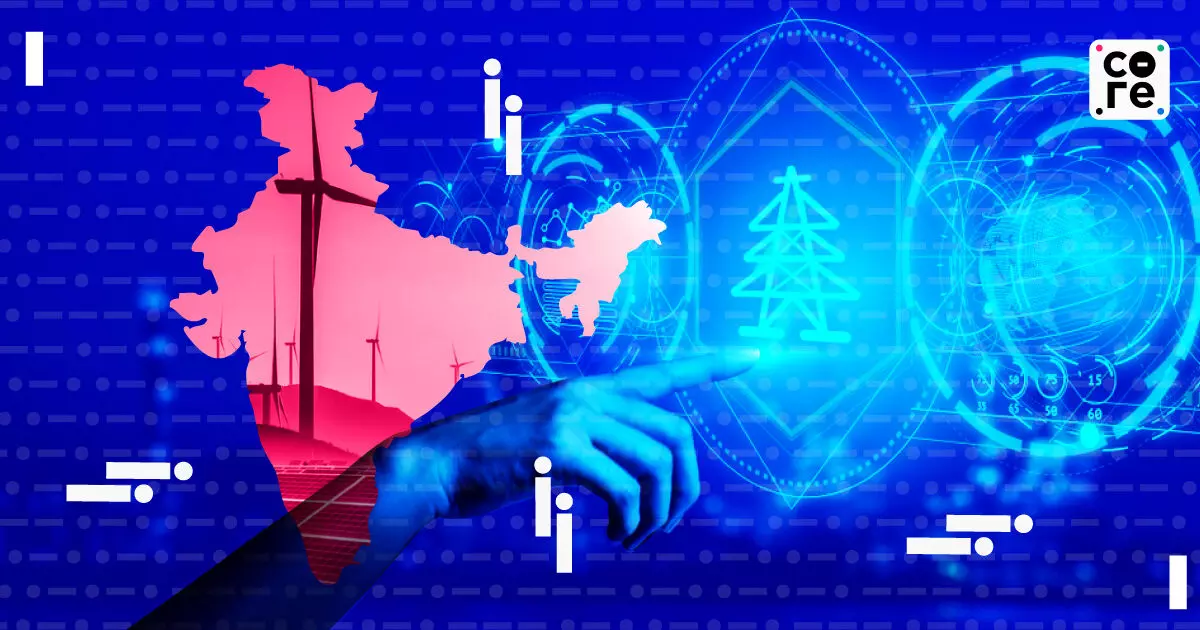
- Home
- Technology
- Will The Digital Energy Grid Reshape...
Will The Digital Energy Grid Reshape India’s Energy Landscape?
From an energy innovations perspective, relevant to startups and privately funded businesses, the evolution of the DEG will potentially unlock opportunities for millions of “energy entrepreneurs”.

During a recent US Senate hearing held in May 2025, OpenAI CEO Sam Altman said that the cost of artificial intelligence (AI), which some argue will also be the cost of ‘intelligence’, is going to be governed and limited by the underlying cost of energy that powers the machines which run these Large Language Models (LLMs).
All things being equal, which includes access to semiconductor GPU chips, networking gear, and the firmware and software that run these systems, ultimately, it is access to reliable and continuous energy that will determine which countries take the lead in the AI race.
Back home in India, Nandan Nilekani, the architect of the Unique Identity (UID)/Aadhar system and Infosys co-founder, has envisioned that the “Digital Energy Grid (DEG)” is going to provide a unified energy infrastructure and the next UPI-scale change in the country.
A Big Challenge
A whitepaper released in February 2025 the key building blocks at the heart of this vision:
i) A unique ID for all “energy entities” (assets/actors) — similar to how phone numbers identify people or postal addresses identify a location
ii) Machine-readable and remotely accessible metadata for every energy entity
iii) Metadata of all remotely-accessible energy entities will be verifiable and portable
These three building blocks aim to create an energy ecosystem tha...
During a recent US Senate hearing held in May 2025, OpenAI CEO Sam Altman said that the cost of artificial intelligence (AI), which some argue will also be the cost of ‘intelligence’, is going to be governed and limited by the underlying cost of energy that powers the machines which run these Large Language Models (LLMs).
All things being equal, which includes access to semiconductor GPU chips, networking gear, and the firmware and software that run these systems, ultimately, it is access to reliable and continuous energy that will determine which countries take the lead in the AI race.
Back home in India, Nandan Nilekani, the architect of the Unique Identity (UID)/Aadhar system and Infosys co-founder, has envisioned that the “Digital Energy Grid (DEG)” is going to provide a unified energy infrastructure and the next UPI-scale change in the country.
A Big Challenge
A whitepaper released in February 2025 the key building blocks at the heart of this vision:
i) A unique ID for all “energy entities” (assets/actors) — similar to how phone numbers identify people or postal addresses identify a location
ii) Machine-readable and remotely accessible metadata for every energy entity
iii) Metadata of all remotely-accessible energy entities will be verifiable and portable
These three building blocks aim to create an energy ecosystem that will help solve the challenge of “information flow”, “energy flows”, and “transaction flows” — which are the key actions involved in the larger energy grid.
The development and implementation of such building blocks will be exponentially more complex and challenging than other widely successful billion-entity systems like UID or UPI.
The reason? India’s legacy energy infrastructure is large, expansive, and archaic. Unlike the UID, where there was no substantial digital identity infrastructure it was to replace, the DEG would need to integrate with deeply entrenched systems already in place.
Having said that, if there is any team which can execute such a vision, it would be the one which has already been successful in earlier such endeavours.
Unlocking Opportunities For Millions
According to the draft vision, having a nationwide DEG will benefit all stakeholders in the energy ecosystem — from producers/consumers (also known as prosumers), energy utility companies, energy regulators, financing agencies, technology providers, city administrators and governments.
Over 1 billion smart energy meters and nearly 13 billion “smart energy” devices with IoT controls (that let one manage and interact with internet-connected devices or systems remotely), up from just under 1 billion a decade ago, are already existing and running on a daily basis, globally.
While energy consumption has always been distributed, traditionally, energy generation and distribution have always been heavily centralised. This is about to undergo a tectonic shift, leading to the development and availability of digital platforms such as the Distributed Energy Resource Management Systems (DERMS).
DEG, from a technology perspective, brings a fundamental shift in combining these smart energy meters, IoT controls with “digital phone numbers” for energy actors and remotely accessible “meta-data” to develop a more distributed, efficient and resilient energy grid.
Like with all things 2025, AI is going to be tightly integrated in this DEG.
AI models trained on these large DEG datasets will help with several core services, such as:
i) Demand forecasting and scheduling: smart grid powered by AI can analyse hourly trends to identify surges in energy usage and automatically schedule energy distribution
ii) Adaptive optimisation: AI agents will become grid managers, they will autonomously control distributed resources (battery dispatch, demand-response commands, etc.) to continuously balance supply and demand
iii) Agentic ecosystem: Several hundred “agentic” transactions could be happening every day on our or our organisation's behalf, based on our energy profiles that the “Agentic-AI” may have learnt about ourselves and our nearby distributed energy prosumers (producers who are also consumers in our neighbourhood).
From an energy innovations perspective, relevant to startups and privately funded businesses, the evolution of the DEG will potentially unlock opportunities for millions of “energy entrepreneurs” who will be involved in the production, consumption or storage of energy for small or micro transactions.
From an energy innovations perspective, relevant to startups and privately funded businesses, the evolution of the DEG will potentially unlock opportunities for millions of “energy entrepreneurs”.

